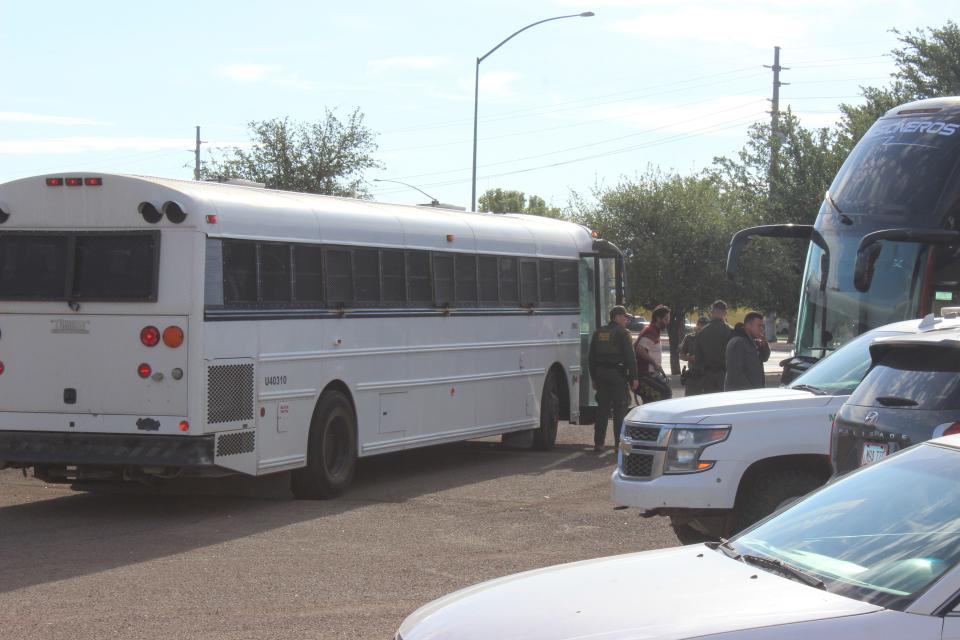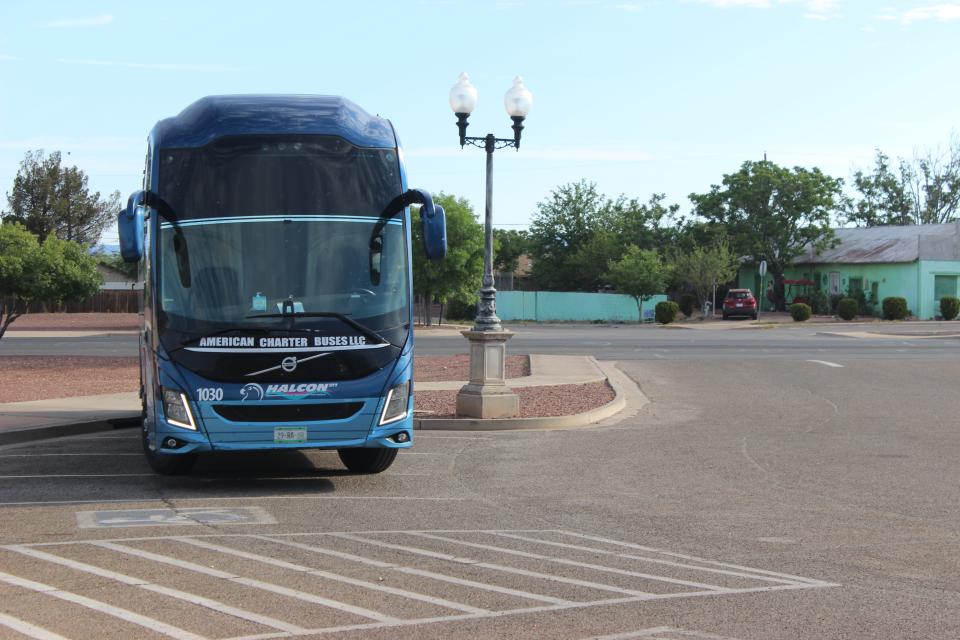AZ busing program prevents street releases of nearly 5K migrants in border communities
Arizona has prevented nearly 5,000 asylum seekers from being released into the streets of rural border communities through state-sponsored bus routes established in early May.
The state has coordinated 143 buses and prevented the unsheltered release of 4,983 asylum seekers as of July 5, according to Don Bolger, public information officer with the Arizona Department of Emergency and Military Affairs.
Arizona Gov. Katie Hobbs first established the bus routes on May 8, a few days before the Title 42 health restriction was set to expire on May 11. The routes run twice a day from Douglas, Naco, Bisbee and Nogales to the Casa Alitas migrant shelter in Tucson.
The ongoing program has cost $371,218 so far, Bolger said. Funding for the routes comes from the state’s Border Security Fund.
“Intrastate buses run as needed to support the decompression of border communities in Naco, Nogales, Douglas and Yuma through AZDEMA’s coordination with County Emergency Managers,” Bolger said in a written statement.
“We are continuing to evaluate how long there will be a need for expanded state assistance for our border communities.”

DEMA is the agency that has been coordinating with local governments and nonprofits to prevent having asylum seekers released into the streets of small border communities.
The bus routes were implemented to ease the strain on rural border communities that often lack the infrastructure and resources needed to care for recently arrived asylum seekers. The communities are often miles away from the nearest airport and bus depots that can help them reach their final destinations elsewhere in the country.
Officials feared that the end of the Trump-era border restriction would prompt a sudden increase in migrant arrivals along the Arizona-Mexico border. While there was no increase after Title 42 ended, there was an uptick in arrivals in the days before May 11.
More than half of the Border Patrol’s migrant encounters in May happened before the end of Title 42, according to U.S. Customs and Border Protection data. Average encounters plunged from nearly 9,000 per day before the restriction expired to an average of 3,500 encounters per day after May 11.

On May 17, the charter buses leaving from southeastern Arizona began making the trip to Phoenix, instead of Tucson, where there was greater capacity to help asylum seekers. DEMA on May 9 began operating a route from Somerton to Phoenix.
Border Patrol agents began releasing paroled asylum seekers into the border communities the week of May 8, as Arizona saw an increase in migrant arrivals ahead of Title 42’s lifting. The communities are located next to Border Patrol stations where agents take in and process migrants.
Nonprofit organizations in Tucson and Somerton usually receive asylum seekers and help transport them to Phoenix or Tucson after they’re paroled into the country. The organizations help arrange travel to their final destinations while providing shelter, food and medical services.
However, if there is an increase in arrivals, shelters may reach their capacity and cannot accept any more asylum seekers.
The Border Patrol can only hold migrants for a certain amount of time in its facilities, and if the agency also is at capacity, they resort to releasing asylum seekers under parole directly into border communities that are often unequipped to help them.
It’s not the first time this has happened.
Beginning in October 2018, the Border Patrol occasionally released asylum seekers into small communities such as Ajo and Gila Bend. The releases caught officials off guard as they scrambled to respond and transport migrants to Phoenix.
The practice stretched into 2021.
Have a news tip or story idea about the border and its communities? Contact the reporter at josecastaneda@arizonarepublic.com or connect with him on Twitter @joseicastaneda.
This article originally appeared on Arizona Republic: State busing program prevents street release of nearly 5k migrants

